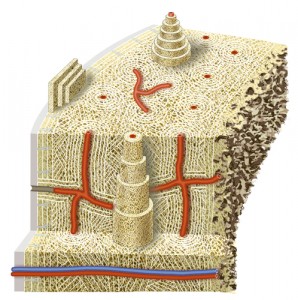 A recent study published in the International Journal of Radiation Oncology Biology Physics has shown that single-fraction radiation therapy (SFRT) for the palliative treatment of bone metastases can improve patients’ quality of life and reduce overall costs in treatment.
A recent study published in the International Journal of Radiation Oncology Biology Physics has shown that single-fraction radiation therapy (SFRT) for the palliative treatment of bone metastases can improve patients’ quality of life and reduce overall costs in treatment.
Radiation therapy is considered to be an effective form of palliative treatment for bone metastases, an occurrence mostly associated with prostate, breast, and lung cancers that begins once the tumor starts to spread throughout the body.
There has been enough scientific evidence that a single fraction (SF) of palliative radiation therapy (RT) for bone metastases is comparable to more extended and costly multiple fraction radiation therapy (MFRT) courses. However, SFRT is still not widely used for this type of treatment.
A team of researchers from the University of British Columbia in Vancouver wanted to evaluate the utilization of SFRT in a population-based, publicly funded health care system.
The study, “Use of Single- versus Multiple-Fraction Palliative Radiation Therapy for Bone Metastases: Population-Based Analysis of 16,898 Courses in a Canadian Province,” is one of the largest ever conducted on the use of SFRT, and was designed to understand SFRT’s use in British Columbia (BC), where radiation therapy treatments are offered via the province’s cancer agency free of charge to patients.
Patients with bone metastases treated with RT during 2007 to 2011 in British Columbia were analyzed using the BC Cancer Agency’s Cancer Agency Information System (CAIS).
The researchers determined that a total of 16,898 courses of RT were delivered to 8601 patients, with RT fractionation separated according to two categories: SFRT and MFRT.
Among the patients, the breast was found to be the most common site for disease (23.4%), while the spine was the most frequently treated bony metastatic site (42.2%).
SFRT was used to treat the majority (49.2%) of bone metastases, especially the ones originating from hematological (56.6%) and prostate (56.%) cancers. Moreover, the ribs (83 %) and extremity (66.4 %) were shown to be the bony metastatic sites that were most typically treated using SFRT.
[adrotate group=”1″]
Nevertheless, significant variation in SFRT use (between 25.5 and 73.4%) was observed among the five cancer centers controlled by the BC Cancer Agency.
“Previous research has shown that single-fraction radiation therapy is equally as effective as longer multiple-fraction courses. Single-fraction radiation therapy offers greater convenience for patients, is associated with fewer side effects and incurs a lower cost. Even a modest change in the frequency of single-fraction radiation therapy use, in Canada and America, could lead to meaningful cost-savings, improved patient convenience and reduced patient side effects, thereby increasing patients’ quality of life. As a result of discussing our study outcomes among radiation oncologists in British Columbia, we have already seen an increase in the use of single-fraction radiation therapy for bone metastases. We are hopeful that these results will motivate practice change worldwide”, Robert A. Olson, MD, MSc, lead author of the study, radiation oncologist at the BC Cancer Agency Centre for the North, said in an American Society for Radiation Oncology (ASTRO) press release.


